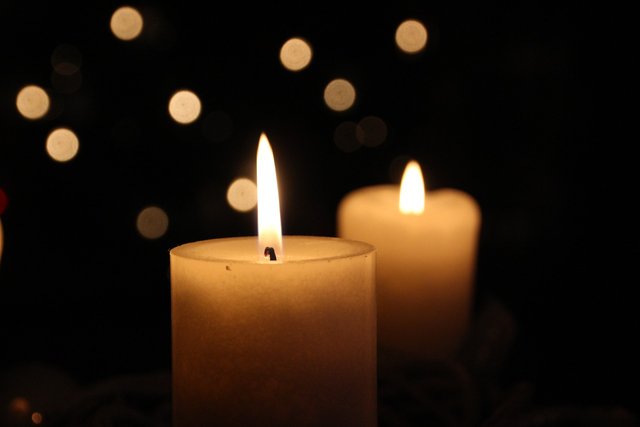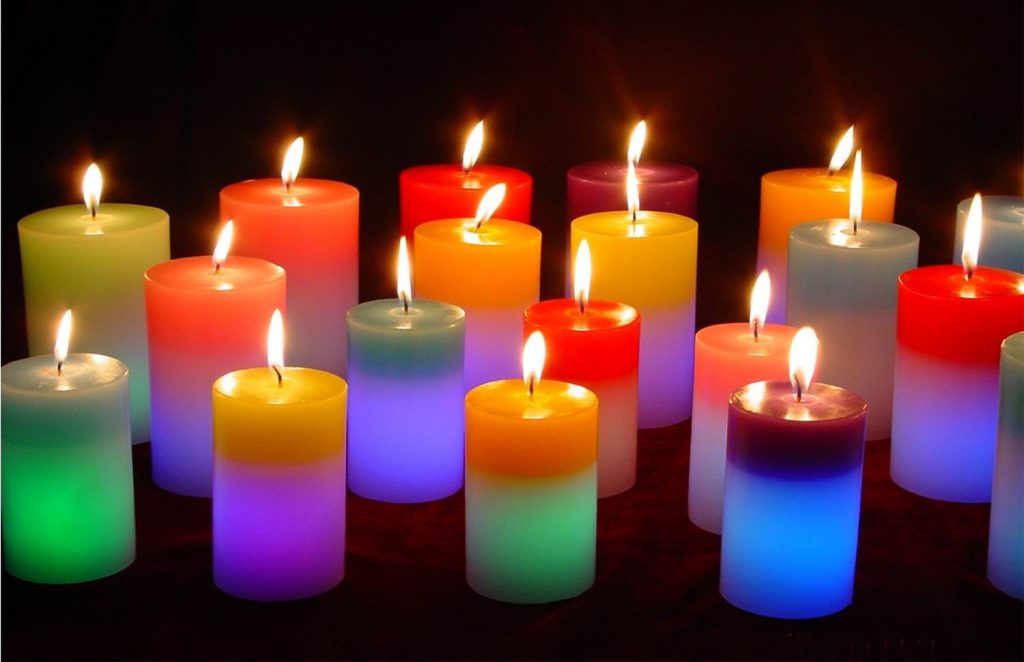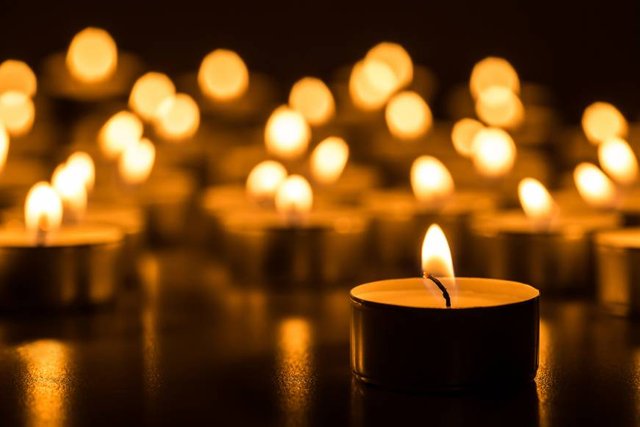Daily Celestial Challenge By @Sirknight Sunday Theme : Light
Hey Guys
This contest is started by @sirknight . This contest is a great contest . In this contest you must have quality of your blog an also the quantity .
This is a contest of day by day . Having lots of fun. Thank you @sirknight for making this community and contest.
Sunday Theme : Light
The blog is of about the branch of light is candle light.
"Candle Light"

History of Candle Making
The light has a recognized position in mankind's history. It is one of humankind's most punctual developments. Flame making has a remarkable past. Candles have been utilized for over 5,000 years, yet little is thought about their start. Candles truly are a basic idea. The flame utilizes wax as fuel to make light. Once the wick of a candle is lit, the warmth from the fire consumes the encompassing wax, which streams into the wick by narrow activity. This response has considered candles the leaders of the night for a large number of years.
Candles have been produced freely in numerous different nations over the globe. They were utilized for various reasons and events. Today, the flame is never again the single wellspring of manufactured light, its significant capacity years prior, but instead is utilized as a part of religious administrations and in addition in festivities, occasions, and for home styles.
The most punctual known light manifestations included the Egyptians. It is frequently noticed that the primary candles created by the Ancient Egyptians were rushlights (otherwise known as lights). These were made by dousing the terse center of reeds in dissolved creature fat. Be that as it may, it is generally seen that since the rushlights had no wick, they were not thought to be a genuine light. It was not until 3000 BC that the Egyptians shaped a genuine flame that was made out of beeswax. The Egyptians are additionally licensed with one of the most punctual flame holders; which is gone back to 400 BC, and was made of mud.
The Chinese then again made candles from whale fat as right on time as 221 BC. In the nations of China and Japan, decreases were made with wax got from creepy crawlies and seeds. This wax was then wrapped in paper and consumed.
In India, the flame making process included the bubbling of natural product from cinnamon trees. This at that point rendered a wax that was utilized for sanctuary candles.
Amid the main century AD, indigenous individuals of the Pacific Northwest combined oil from the eulachon, or "candlefish", for their lighting source. Subsequently, an exceptionally basic flame could be made by staying the dried fish on a forked bit of wood and after that lighting it.
The Roman Empire was the first to give a light that looks like the flame we know and utilize today, and also for the most part credited with building up the idea of a mischievous candle. In Rome, they utilized fat, to make their candles. Fat is the fat from dairy animals or sheep. This turned into the standard material utilized as a part of candles in Europe. In spite of the fact that the fat was greatly smoky, the smoke was excused for light and utilized for supplication. The obnoxious possess a scent reminiscent of fat candles is because of the glycerin they contain. The possess a scent reminiscent of the assembling procedure was unpleasant to the point that it was prohibited by mandate in a few urban communities. For places of worship and illustrious occasions, candles from beeswax were utilized, as the odor was generally less upsetting. By 1415, fat candles were utilized as a part of road lighting.
Beeswax candles were made much like the Romans made their candles with fat. Not at all like creature based fat, beeswax consumed unadulterated and neatly, without delivering a smoky fire. It additionally emitted a lovely sweet smell as opposed to the foul scent of fat. Beeswax was a colossal change from the fat, yet just constrained amounts were accessible. This made it costly. Except for church and the high society, not very many homes could stand to consume them. Consequently, fat candles were the basic family unit flame for Europeans, and by the thirteenth century, light making had turned into an organization make in England and France. The flame creators went from house to house making candles from the kitchen fats put something aside for that reason, or made and sold their own candles from little light shops.
The act of utilizing molds to make candles started in the fifteenth century in France. The wax was filled empty open-finished barrels. These chambers had a top with a little opening in the middle for wicking. The wick was then set in the form and held set up by little wires. Once the form was filled the wicks were pulled tight and the wax left to cool. Once cooled the wires were taken out. A genuine light creator would then fade his candles by hanging them outside. In spite of the fact that he would shield the candles from the sun and the components, the procedure would take 8 to 10 days.

Provincial ladies offered America's first commitment to flame making when they found that they could acquire an exceptionally decent wax by heating up the grayish-green berries from the cove berry bush. This wax made a sweet noticing and clean consuming light. Notwithstanding, the way toward separating the wax from the bayberries was to a great degree dreary and tedious. Nearly fifteen pounds of bubbled bayberries would give just a single pound of wax. This brought about the defeat of bayberry candles.
The development of the whaling business in the late eighteenth century got the primary real change light making since the Middle Ages. In 1750, Spermaceti, a wax acquired by solidifying sperm whale oil, was utilized to give exceptionally costly candles. Spermaceti wax was utilized as a substitution for fat, beeswax, and bayberry wax. Like beeswax, the spermaceti wax did not emit a foul scent when consumed, but rather additionally created a brighter fire. It's consistency likewise is harder than either fat or beeswax, so it wouldn't relax or twist in the mid year warm. History specialists take note of that the principal "standard candles" were produced using spermaceti wax.
The nineteenth century was a characterizing time for the candles and contemporary flame making. The principal protected flame making machines were presented. This leap forward enabled candles to achieve the homes of all classes. In 1834, creator Joseph Morgan industrialized the cutting edge light industry by building up a machine that considered ceaseless generation of shaped candles. He did this by utilizing a barrel with a mobile cylinder to discharge candles as they hardened. Morgan could create 1,500 candles for every hour. With the presentation of automated generation, candles turned into an effortlessly moderate item for the majority.

It was additionally appropriate around this same time that a scientific expert named Michael Eugene Chevreul recognized out of the blue that fat comprised of different unsaturated fats. One of the unsaturated fats he distinguished was stearine (stearic corrosive). In 1825, Chevreul and another scientist Joseph Gay Lussac licensed a procedure for light making from rough stearic, bringing about stearin wax. A wax which was hard, tough and consumed neatly. This procedure definitely enhanced the nature of candles. Stearin candles still stay well known in Europe right up 'til the present time.
The interlaced wick was additionally created in the nineteenth century. Wicks before this time were made just of wound strands of cotton, which consumed inadequately and required steady upkeep. The interlaced wick was firmly plaited and a part of the wick twisted over and empowered it to be totally devoured.
Not until the point that 1850 did paraffin turn out to be industrially practical, when James Young documented a patent to effectively isolate the normally happening waxy substance from oil and refine it. Paraffin could be utilized to make modest candles of high caliber. Scentless and somewhat blue white in shading, paraffin was a blast to light making since it consumed neatly, reliably and was more temperate to deliver than some other flame fuel. Its lone disservice was a low dissolving point. This was soon overwhelmed by including the harder stearic corrosive, which had turned out to be broadly accessible. This made a prevalent and less expensive flame.
In spite of advances in flame making, the light business was crushed not long after by the refining of lamp fuel and the presentation of the light by Thomas Edison in 1879. Now, light making started to decrease, and candles turned out to be to a greater extent a beautiful thing.
Today the light market offers flame darlings a wide assortment of candles created from an a wide range of waxes. These candles are offered in a tremendous measure of hues, shapes, outlines and aromas. Candles may never again be the sole wellspring of light, yet they symbolize festivity, stamp sentiment, calm the faculties, characterize service and emphasize homes far and wide.
Pilgrim ladies offered America's first commitment to light making when they found that they could get an extremely decent wax by heating up the grayish-green berries from the cove berry bush. This wax made a sweet noticing and clean consuming flame. Notwithstanding, the way toward removing the wax from the bayberries was to a great degree monotonous and tedious. About fifteen pounds of bubbled bayberries would give just a single pound of wax. This brought about the defeat of bayberry candles.
The development of the whaling business in the late eighteenth century acquired the primary significant change light making since the Middle Ages. In 1750, Spermaceti, a wax got by solidifying sperm whale oil, was utilized to give extremely costly candles. Spermaceti wax was utilized as a trade for fat, beeswax, and bayberry wax. Like beeswax, the spermaceti wax did not radiate a foul smell when consumed, but rather likewise created a brighter fire. It's consistency likewise is harder than either fat or beeswax, so it wouldn't relax or twist in the mid year warm. Students of history take note of that the principal "standard candles" were produced using spermaceti wax.
The nineteenth century was a characterizing time for the candles and contemporary flame making. The main licensed flame making machines were presented. This leap forward enabled candles to achieve the homes of all classes. In 1834, designer Joseph Morgan industrialized the cutting edge flame industry by building up a machine that took into consideration ceaseless creation of formed candles. He did this by utilizing a chamber with a versatile cylinder to launch candles as they set. Morgan could deliver 1,500 candles for every hour. With the presentation of motorized creation, candles turned into an effortlessly moderate product for.
I hope you guys and our senior @sirknight likes it.
So the day by day theme of this contest by @sirknight are
☞MONDAY - DARKNESS
☞TUESDAY - ANIMAL~KINGDOM
☞WEDNESDAY - STRUCTURES
☞THURSDAY - FORCES~IN~NATURE
☞FRIDAY - LOVE~BEAUTY~FREEDOM
☞SATURDAY - AGRICULTURE
☞SUNDAY - LIGHT
Get your post resteemed over 90000+ followers and get upto $21+ value Upvote. Your post will skyrocket and give you maximum exposer.
See our all pakages at: https://tinyurl.com/whaleboostup